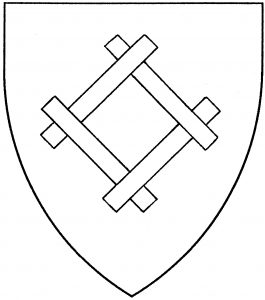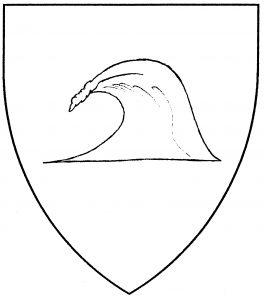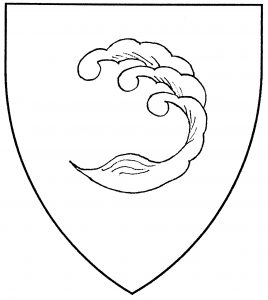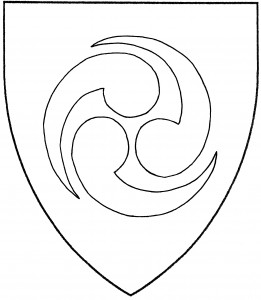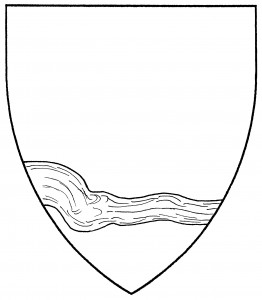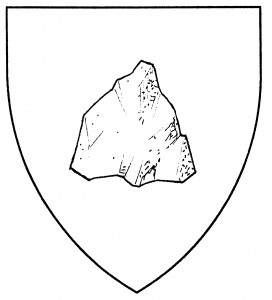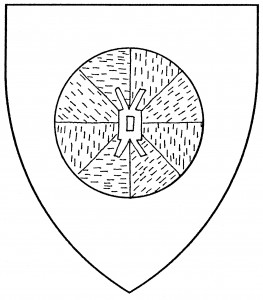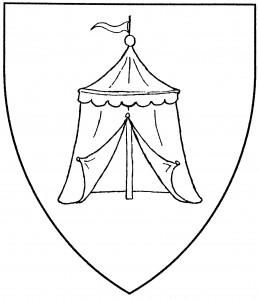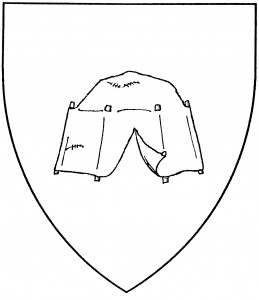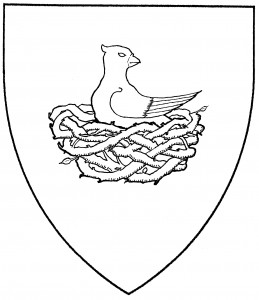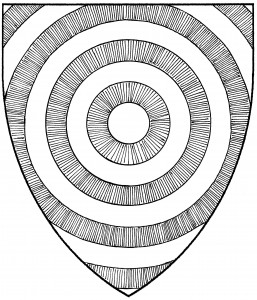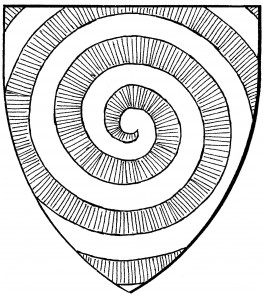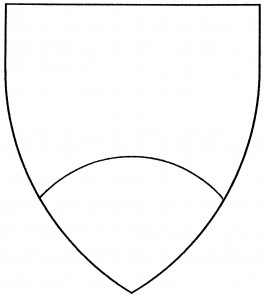
Mount (Period)
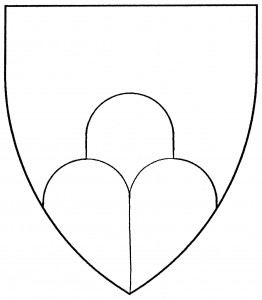
Trimount, or mount of three hillocks (Period)
A mount is the heraldic representation of a hill. It’s drawn as a rounded hillock issuant from base; it’s equivalent to a “base enarched to chief”. The mount is sometimes drawn naturalistically, with tufts of grass; Society heraldry considers this artistic license, and it’s often ignored in Society emblazons. A “mount proper” is vert, and some texts claim that mounts are vert by default; but they have no default coloration in Society heraldry.
If the mount is not issuant from base, but cut off at the bottom, it must be blazoned “couped”. The mount may also have more than a single hillock, especially in Italian heraldry: three, six, or ten hillocks are possible, and would be blazoned, e.g., “a mount of three hillocks” (or “coupeaux”, or “peaks”), as in the illustration. (The mount of three hillocks may also be termed simply a “trimount”.) The multi-hilled form of mount dates from at least 1413, in the arms of the Kings of Hungary [Conz.Const. xcix].
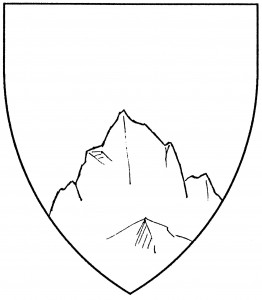
Mountain (Period)
A variant of a mount is the “mountain”, representing a mountain instead of a hill. The mountain is usually drawn more naturalistically, with rocky crags and a peak; the exact details are not blazoned. It too is period, in the canting arms of di Monti da Cara, mid-15th C. [Triv 235]. Like the mount, it is issuant from base unless otherwise specified.
Multiple mountains may be conjoined to form a “mountain range”, as in the canting arms of Siebenbürger, 1605 [Siebmacher 46]. The period example requires a long, narrow area for displaying the range; the mountains issue from the lower edge by default. The number of mountains in the range need not be specified.
The mount should not be confused with the “mound”, which is another name for the orb. For related charges, see base, point, rock.
The Prince of the Summits bears: Azure, a gryphon passant and on a mountain argent, a goblet azure within a laurel wreath vert.
William de Montegilt bears: Sable, a two-peaked mountain couped Or, capped argent.
Morna ó Monadh bears as a badge: Purpure, a mount of three hillocks Or.
Jan Rafiel Shkoder bears: Vert, a mount of six hillocks between two falcon’s heads erased Or.
Alys de Montcharmont bears: Azure mullety, on a bend argent a mountain range vert.


